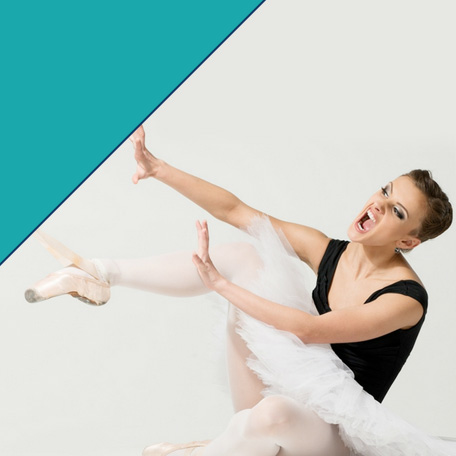This article was originally featured in the Nov-Dec 2015 issue of Dancetrain magazine.
The way Australians spend their leisure time has changed in the last 20 years. Today’s statistics suggest that 77% of children spend their spare time watching television (1), only half are involved in organised sport (1), and around 1 in 4 Australian children are classified as overweight or obese (2).
Research shows that between the ages of 13 and 20 many adolescents drop-out of physical activity entirely. The reasons include boredom, lack of time, and a lack of interest in the trend toward more ‘serious’ competition (3).
The physical benefits of staying active throughout the teenage years, which includes participating in dance classes, are immense. Active children are far more likely to grow into healthy adults, and during their lifetime are less likely to develop serious health problems such as diabetes, cardiovascular disease, and obesity (4). And if that’s not enough, physical exercise such as dance has been shown to improve mental health as well.
Below are some more specific reasons why dance is so good for us:
- Bone Health: Dance places positive stress on growing bones causing them to grow into stronger, healthier bones! Girls lay down an incredible 25% of their total lifetime bone mass over the 2-3 years of their peak growth spurt (usually between the ages of 11 and 13). Weightbearing exercise will maximise the amount of bone that is laid down at this time, which can help to prevent bone diseases such as osteoporosis later in life.
- Improved Posture: Many adolescents find it difficult to maintain good sitting and standing posture, and develop bad postural habits during these years. Poor posture can lead to back and neck pain, and even headaches in some cases. Dance helps to strengthen postural muscles, including core muscles that surround and support the spine, helping to keep spines healthy and improve physical posture.
- Improved coordination: Studies show that children today are becoming less coordinated than previous generations (5), probably because they aren’t exposed to the same amount of physical exercise. Dance helps to develop a strong sense of coordination, timing and balance.
- Better Mental Health: There have been many studies that have shown that people who are physically active experience less depression and better mental health than those who are nonactive (6). Bonus!
So the health benefits of dancing are clear. But is there a time when dance is not good for us?
Fortunately the answer is: ‘very rarely’. It is important however to look out for signs that dancing may be putting too much strain on your body. These signs include: persistent pain, recurring injuries, or weight loss beyond a healthy level. Most of the time, talking to parents, dance teachers, and consultation with your health professional can overcome these issues, even if they do take time and careful management.
Essentially the take home message is this: always ensure that you are enjoying your regular physical activity. If your dance school is winning all of the local eisteddfods, but you find you’re no longer looking forward to your classes, then it is always worth discussing this with your parents or teacher rather than dropping out of dancing altogether. Your priority in selecting a dance class should be to find a class that inspires you to continue dancing. If you can achieve this, then you are establishing healthy exercise habits that will most likely last a lifetime.
References
- Gemba Research, 2013
- Australian Clearinghouse for Youth Studies 2012, ‘Youth Overweight and Obesity in Australia’, Face the Facts Briefing, University of Tasmania, Hobart.
- Australian Bureau of Statistics 2012, ‘Participation in Sport and Physical Recreation, Australia, 2011–12’ (4177.0), issued 19 December
- Australian Institute of Health and Welfare 2012, Risk factor trends: Age patterns in key health risks over time, Canberra, ACT.
- Hardy, LL; King, L; Espinel, P; Cosgrove, C; Bauman, A 2010, NSW Schools Physical Activity and Nutrition Survey (SPANS), NSW Ministry of Health, Sydney.
- Uchida, S. (2013). Exercise and Physical – Mental Health. Clinical Neurophysiology, 124(8)

